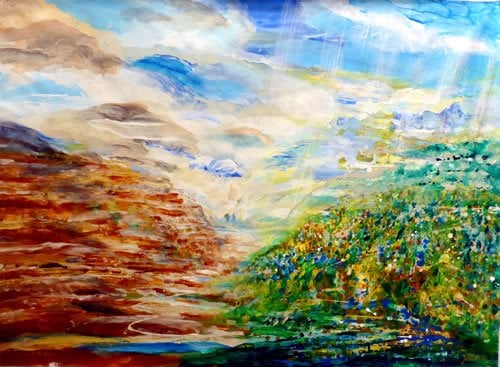Teaching anyone from the next generation to drive a car can be complicated.
Giving up your driver’s seat so your kid can take the wheel for the first time is a bit like falling in love.
Your heart pounds wildly. Its rapid beat hijacks your ears. Then there’s the heat. Your skin’s aflame, triggering sweat pores to let the flood gates open. And your mind is swirling with a thousand thoughts invading all at once. And you feel like throwing up and running away to hide, but you’re paralyzed, tongue tied and feeling stupid.
It’s a hair-raising experience.
As a parent in the passenger seat, the stress can drive you closer to the Lord. Your prayer life grows exponentially, and you make darn sure that you are truly saved. (There are no atheists in foxholes, or buckled in cars with ‘L’ plates).
Young learner drivers though, to their credit, quickly pick up on the benefits of sticking to the road rules. For one, when they drive to the speed limit instead of 15km under, there’s less noise pollution (beeps), less offensive language (bleeps), and significantly less rude hand gestures including those from people in other vehicles.
Plus, by not violating any road rules they can keep all their precious licence points. Bigger bonuses come from having done no damage to any other cars—parked or in motion. Though the best blessing of all is when innocent pedestrians and other motorists get to live for another day. Yay.
I’ve known several young drivers who have, through faults of their own: speeding, reckless driving, and arrogance; lost their provisional driver’s licences. And for a teen to lose their licence is as disastrous as dropping their mobile phone in the middle of the ocean.
But like their parents before them, they inevitably learn that actions have consequences. And that life is a highway that we wanna ride all night long.

The Next Generation
Final words of any great leader seem to carry more gravity, like Moses’ final instructions to the Israelites before they entered the Promised Land. In Deuteronomy, Moses encouraged God’s people to devote themselves wholeheartedly to the Lord, and reject the worship of false gods and idols.
They would take part in a ceremony where the new generation would formally renew the covenant with God that the previous generation had broken, found in Deuteronomy chapters 27 and 28.
The first generation were eyewitnesses to God’s tremendous power. They saw the devastation of the ten plagues on Egypt, the miraculous parting of the Red Sea, and experienced God’s deliverance. It was the Lord himself who gave instruction on how He wanted them to live by giving them the Ten Commandments written on tablets of stone.
Because they broke God’s covenant, they wandered around in the wilderness for four decades, never to cross over to Canaan, the land flowing with milk and honey.
The second generation were only children when they escaped Egypt and crossed the Red Sea, and too young to remember Moses declaring the law at Mt Sinai. So, the law had to be read and explained a second time for the emerging generation.
Here’s some trivia. The Hebrew Old Testament was translated into the Greek language. ‘Deutero’ means second, and ‘Nomos’ means law in the Greek, so if you’ve ever wondered how that book received the title Deuteronomy, there’s your answer.
Writing the Law on stone
And it shall be on the day when ye shall pass over Jordan unto the land which the LORD thy God giveth thee, that thou shalt set thee up great stones, and plaister them with plaister:
And thou shalt write upon them all the words of this law, when thou art passed over; that thou mayest go in unto the land which the LORD thy God giveth thee, a land that floweth with milk and honey; as the LORD God of thy fathers hath promised thee. Deut 27:2,3
Large stone pillars were to be set up following a method used in Egypt of whitewashing the stones beforehand with a coating of lime or gypsum. This would create a white background on which writing could be clearly visible and read.
The content of the covenant, the law, was to be published in this manner so that the children of Israel could make intelligent and informed decisions.
These large pillars were also a reminder to all generations of their relationship to God and His Word.
Building an Altar to the LORD
Along with the large pillars of stone, the second generation of Israelites were to build an altar on Mount Ebal, which was located in the center of the Promised Land. The altar was to be constructed with uncut stones.
Thou shalt build the altar of the LORD thy God of whole stones: and thou shalt offer burnt offerings thereon unto the LORD thy God. Deut 27:6
Why were they uncut? During this period Israel did not have iron tools with which to cut stone.
Now there was no smith found throughout all the land of Israel: for the Philistines said, Lest the Hebrews make them swords or spears. I Samuel 13:19
It could be that God was discouraging his people from being dependent on pagan nations, since His covenant relationship was exclusive in nature.
The animals to be offered for the burnt offerings were to be of the highest quality, young and without defects. Generally, they were bulls, sheep or goats. The offerings would be devoured entirely by the flames and represented complete devotion to God.
Peace offerings on the other hand were presented to express genuine appreciation to the Lord for His goodness and provision.
And thou shalt offer peace offerings, and shalt eat there, and rejoice before the LORD thy God. Deut 27:7
The peace offerings and ceremonial feast were important symbols that clearly expressed the heart—that the people were on board with God’s plan. They were to be joyful before the LORD during this celebration that marked the renewing of the covenant.
The ceremony of Blessing and Cursing
After this, six tribes were to assemble on Mount Gerizim and the remaining six tribes were to gather on Mount Ebal.
The twin hills form a natural amphitheater so that each group could hear the other. Between these two high hills was the well-watered and fertile Valley of Shechem.
This pair of mountains provided a stunning visual contrast for the Israelites. On Mount Ebal—The hill of cursing—the soil was heavy with limestone. The surface was rocky, and pitted with caverns and caves.
On the side facing the valley, it was barren, rough and parched because clouds tended to form on the northern side of the mountain.
Mount Gerizim—The hill of blessing—was by distinction, the prettier twin, with a lush and fertile northern face. A spring lower down the mountain yielded fresh water, and rain running down that face gave life to the valley below.
In an age and society where PowerPoint and Canva didn’t exist, God utilized natural landmarks and formations as His visual aids.

The hills were strong graphic reminders that a life of obedience to God and His law would bring fruitfulness and blessing, while a life of rebellion would lead to a bleak, unproductive life filled with hardship and pain.
During the ceremony, with the ark of the covenant at the centre of the valley, the Levites and priests would pronounce the curses and blessings.
From each mountain, the Israelites would respond to each blessing or curse, with the people replying with an “Amen”, amplified by the natural acoustics. Amen meaning, “so be it.”
Every Israelite would participate in the renewal of the covenant in this way. Hearing each pronouncement and adding their voice in agreement would strengthen their resolve and leave a lasting impression.
Singing across the valley
According to Brent Nagtegaal from the Armstrong Institute of Biblical Archaeology, singing was involved in the covenant renewal.
“Moses’s instructions were explicit and detailed. Six tribes were told to gather on Mount Gerizim, the other six on Mount Ebal. Joshua then had leading men read from the book of Deuteronomy.
The people were reminded of the blessings they would receive if they obeyed God and the curses that would come if they disobeyed. After that, the six tribes on each mountain were instructed to sing back and forth, their voices resonating across the valley.
The tribes on Mount Gerizim rehearsed the blessings; the six tribes on Mount Ebal responded by singing the curses.” Nagtegaal (2022, para 2)
If Nagtegaal is correct, then the hills were well and truly alive with the sound of music. It would have been a memorable and magnificent concert on the mountains. It makes you wonder what impact it had on the surrounding pagan nations.
Did it pique their curiosity about the God of the Israelites?
Moses the singer/songwriter
Singing the blessings and the curses is well within the realm of possibility considering that Moses was a prophet and a songwriter.
After God delivered the Israelites from Egyptian slavery and parted the Red Sea to allow his people to pass through to safety, Moses wrote and sang a song dedicated to magnifying the Lord for his omnipotence and his salvation. It was a song of celebration and a hymn of praise.
Then sang Moses and the children of Israel this song unto the LORD, and spake, saying, I will sing unto the LORD, for he hath triumphed gloriously: the horse and his rider hath he thrown into the sea.
The LORD is my strength and my song, and he is become my salvation: he is my God, and I will prepare him an habitation; my father’s God, and I will exalt him. Exodus 15:1-2
Psalm 90 is attributed to Moses and stands as the oldest psalm. It is a song that magnifies God’s eternal nature and contrasts man’s brief existence on earth.
Deuteronomy 32 is the most well-known song written by Moses. In it, he warns the people of the high price of choosing to abandon God. Moses contrasts the exalted character of God with the corrupt leanings of His chosen people, and describes the awful judgments that would fall upon them for their disobedience.
The song lifts in the final verse which expresses God’s mercy to the faithful, in delivering them from total destruction by their enemies.
Rejoice, O ye nations with his people: for he will avenge the blood of his servants, and will render vengeance to his adversaries, and will be merciful unto his land, and to his people.
And Moses came and spake all the words of this song in the ears of the people, he, and Hoshea the son of Nun. Deut 32:43&44
Every day, God is giving us the choice to live under His blessings or curses.
I know which hill I’d rather climb.
Bibliography
Author unspecified, 2023. ‘Psalm chapter 90’, BibleRef.com. Retrieved September 10 2023 from
https://www.bibleref.com/Psalms/90/Psalms-chapter-90.html
Author unspecified, 2023. ‘What is the significance of Mount Ebal in the Bible?’, Compellingtruth.org. Retrieved September 10 2023 from
https://www.compellingtruth.org/Mount-Ebal.html
Author unspecified, 2023. ‘Deutoeronomy 32 Bible Commentary—Matthew Henry’, Christianity.com. Retrieved September 10 2023 from
https://www.christianity.com/bible/commentary/matthew-henry-complete/deuteronomy/32
Henry, M. 1961, Commentary on the Whole Bible, Zondervan, Michigan.
Macarthur, J. 2019, The Macarthur Study Bible 2nd Edition, Thomas Nelson Publishers, China.
Nagtegaal, B. 2022, ‘Mount Ebal and the Tale of Two Altars’, Armstronginstitute.org, Armstrong institute of Biblical Archaeology. Retrieved September 10 2023 from
https://armstronginstitute.org/679-mount-ebal-and-the-tale-of-two-altars
Pawson, D. 2015, Unlocking the Bible, William Collins, UK.
Unger, M.F. 1988, The New Unger’s Bible Dictionary, Moody Press, Chicago.
Walton, J. 2000, The IVP Bible Background Commentary Old Testament, IVP Academic, Illinois.


